Bus drivers in Singapore aren't getting any younger. Here is why it's a big problem
Efforts to shed the image of bus driving as a blue-collar job intensify as manpower shortage persists
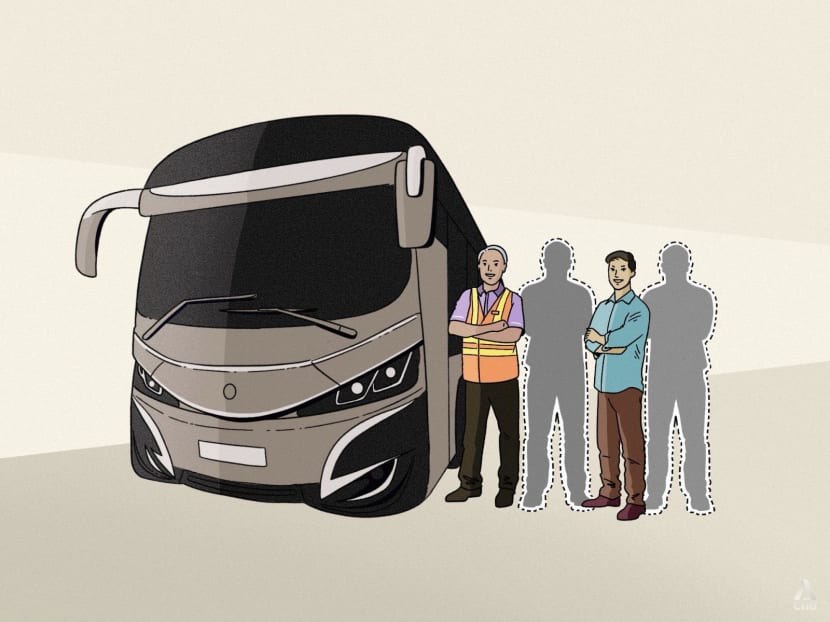
(Illustration: CNA/Nurjannah Suhaimi)

This audio is generated by an AI tool.
In trying to attract younger workers to drive its 45-seater charter buses, one private transport firm in Singapore decided last year that it needed to offer better financial incentives.
At the time, the average driver with Westpoint Transit was 60 years old. If it did not attract a younger generation of drivers into its team, the company risked the possibility of a manpower shortage when its current crop of drivers retire.
So, it revised its pay structure in 2023, raising its maximum starting pay for these drivers from around S$3,500 to S$5,000.
The move worked, its director of business development Lionel Lee told CNA TODAY. The average age dropped to 45, and at present, about 30 per cent of the drivers are below the age of 30.
In a different move, another private bus operator, A&S Transit, has turned to digital technology to boost the image of bus drivers as an occupation, among other initiatives.
This was meant to drum up interest in this form of transportation among younger jobseekers who might be thinking of a transportation career.
Earlier this year, A&S Transit collaborated with the team behind Singverse, a role-playing game on the online game platform Roblox, to recreate digital versions of its bus models in a virtual universe based on real roads in Singapore.
One of the features for players is to experience various A&S Transit jobs, including assuming the role of a bus driver.
Mr Dexter Ang, A&S Transit's marketing manager, said: “They can become almost like a real bus captain, providing a safe outlet where they can drive on the roads and on buses that they see and like in real life.”
During school holidays, the company also organises bus tours for the bus enthusiast community, hoping to generate awareness and interest among the younger generation.
The need for bus companies to transform their appeal to jobseekers is becoming urgent as the industry suffers from a constant shortage in manpower, which has caused operators numerous headaches in the past.
At the heart of it is the sector's ageing Singaporean workforce.
Many workers are nearing or have reached their retirement age, and there are few younger Singaporeans willing to take up the job, put off by what they perceive as tiring and dull work with long hours and low pay.
Operations manager Leo Baiming of DKJ Transport Service said: “The population is ageing. Among our Singaporean drivers, the youngest is 55. And most of them are around 70 years old. I really cannot see the future of this industry.”
For Mr Ang from A&S Transit, what needs to be done is to change the perception of bus driving as a “blue-collar” job, referring to someone who mainly does physical work and does not work in an office.
His company believes that such a paradigm shift must begin at a young age, which is why his firm's initiatives are mainly geared towards encouraging the young to be private bus drivers without the baggage of old mindsets.

The shortage of drivers has already caused downstream problems to commuters who rely on these transportation methods to get around.
Last year, the pricing cap for school bus fees were raised by 7 per cent due to the rise in fuel and manpower costs, in what was said to be a one-time increase.
In that same year, a shortage of drivers pushed ComfortDelGro, one of the largest companies in the private bus services sector, to end its contracts with four primary schools.
In January this year, school bus fees were raised again by 13 per cent because of "continued rising cost pressures".
Operators were also compelled to merge routes, leading to longer travel times.
WHAT PUBLIC BUS SECTOR DID TO COPE
What private operators are facing now was the same problem disrupting the public transport sector a couple of years back, though public surveys still pointed to the high satisfaction levels among commuters.
The COVID-19 pandemic revealed the impact that a shortage of public bus drivers can cause, after several bus drivers contracted the disease and there was no one to replace them. As a result, some services had to be suspended.
Beyond the pandemic, another example is a reduction of a small number of trips for bus services 137 and 137A in Kaki Bukit last January, which led to "higher loading levels" in the buses. This was attributed to a manpower shortage as well.
Dr Raymond Ong from the National University of Singapore (NUS) said that the labour crunch is a perennial concern across both private and public sectors. He teaches transportation planning at the department of civil and environmental engineering.
“The current setup is very manpower-heavy. In general, there is always this shortage because we are facing an ageing population, and not many Singaporeans or young ones will step forward to be bus drivers," he added.
At SBS Transit, which runs the largest fleet of public buses, only about 6.5 per cent of its full-time drivers are below the age of 30.
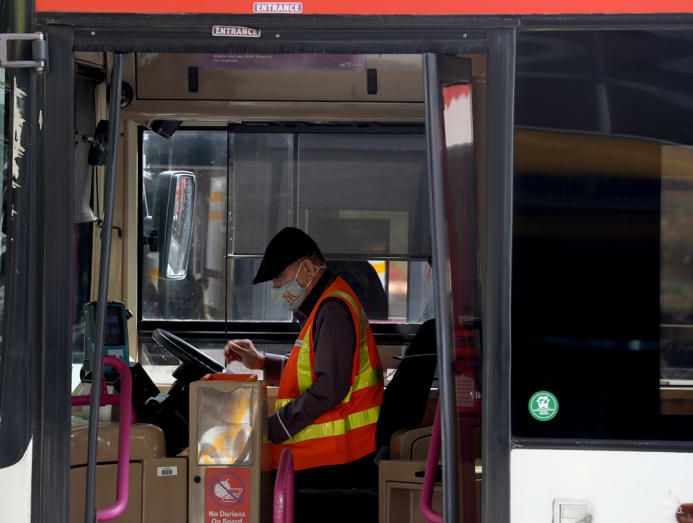
And over at Tower Transit Singapore, these younger drivers comprise a mere 3 per cent of its current team. Foreign workers make up around 35 per cent of its crew.
Its spokesperson said: "We were faced with manpower shortages throughout (2024) and were only able to meet our operational needs in November (this year)."
Part of the issue is the growing number of routes needed to meet commuter demand.
In July this year, the Land Transport Authority introduced new bus services to improve connectivity to younger public housing estates such as Punggol, Tengah, Tampines and Yishun under its Bus Connectivity Enhancement Programme.
Under this initiative, the capacity of certain bus services also had to be raised.
This means that the workforce has to expand to cater to these new routes and keep up with the goal to reduce waiting times for buses.
However, this demand cannot be met simply by hiring more foreign drivers.
The maximum quota for foreigners that public operators can employ is 35 per cent of its total workforce. This figure is the same for private transport operators, the Ministry of Transport said.
So, in an effort to draw more young people into the workforce, public bus companies has progressively enhanced its career scheme for bus drivers, including restructuring salary packages, benefits and performance incentives.
In line with promoting inclusivity, their drivers have also been provided with more training in helping passengers with disabilities, for instance.
The job title of "bus captains" being used on payroll and in publicity materials, which began more than a decade ago, remains to this day to reflect the job redesign.
SBS Transit's spokesperson Grace Wu said that the basic salary for bus drivers who are Singaporeans and permanent residents has increased by about 23 per cent compared to eight years ago.
From October, the company started to offer a sign-on bonus of S$20,000 – up from S$10,000 – as well as up to S$5,000 in training incentive. There is also S$1,000 for successful employee referrals.
“For mothers with children under the age of 13, we offer additional benefits to help defray childcare expenses,” Mrs Wu added.

At Tower Transit, the starting monthly pay is S$2,224 for entry-level Singaporean and permanent resident bus drivers. This is a jump of more than 15 per cent from 2016, its managing director Winston Toh said in a statement.
These drivers are also given the choice to sign up for a five-day work week – not the usual six – and they get to choose their preferred shifts.
Even though shift hours have not changed much, Tower Transit is offering better welfare benefits and career development opportunities for its employees, Mr Toh said.
He added that the company provides air-conditioned bunks and beds at the depots for its drivers to nap during their breaks.
There are fully equipped gyms at two depots in Bulim and Mandai and drivers get free monthly haircuts.
Such moves aims to improve welfare for the whole workforce and not just younger staff members, Tower Transit said.
In terms of career progression, it said that the drivers have the chance to move into supervisory and managerial roles.
Mr Toh gave an example of bus enthusiast Amir Hamzah, 29, who joined Tower Transit as a bus captain and was promoted to interchange supervisor after two months at the company.
"Four years later, he was again promoted to interchange manager and now oversees the Tengah Bus Interchange,” he said.
Similar career progression pathways are available among the other public transport operators. At Go-Ahead Singapore, bus captains can be promoted to chief bus captain and assume mentorship roles.
These Go-Ahead Singapore employees may also get to take up operational and corporate roles within the company.
As for SMRT, managing director Tan Peng Kuan for SMRT Buses said in a statement that the company allows those with leadership abilities to take on responsibilities in roster planning.
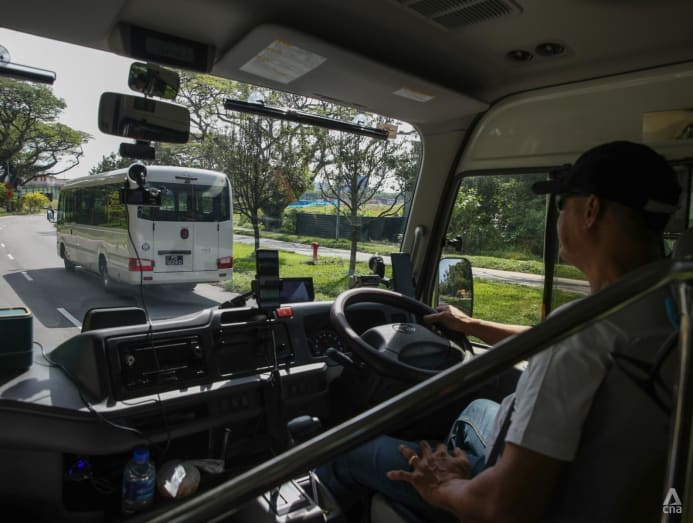
Listen:
THE RARE YOUNGSTERS BEHIND THE WHEEL
Working in the midst of older staff members at Tower Transit is Mr Matthew Tay, 25.
The interchange supervisor helps to dispatch buses according to schedule, attend to passengers and assist with the overall management of Woodlands Bus Interchange.
He used to be a part-time bus driver at A&S Transit.
“As a bus enthusiast, I've always wanted to be part of a bus operator’s day-to-day operations," he said.
"I was informed of an opening for an interchange supervisor in 2022 and decided to apply for the job as it was an opportunity to live out my childhood dream.”
He admitted that the role is demanding at times. He works either the morning shift (5am to 3pm) or the night shift (3pm to 2am). For the morning shift, he has to wake up in the wee hours of the night to catch the bus taking employees to work.
Mr Tay added that he constantly has to adjust his body clock when he goes from one shift to another.
What keeps him motivated is knowing that his work is a service that supports the daily lives of commuters. Playing a role as part of the broader transport network gives him “a deep sense of purpose and pride”.
“Small actions, like helping someone retrieve a lost item or guiding them on the fastest route, brightens their day and reminds me of the difference I can make.”
He also said that some of the more senior drivers would ask him for help in navigating the various digital applications and systems that the company uses.
“I will patiently explain the processes to them, ensuring they feel confident in using the apps on their own. This requires understanding, and I’m proud to have earned a reputation as someone they can rely on.”
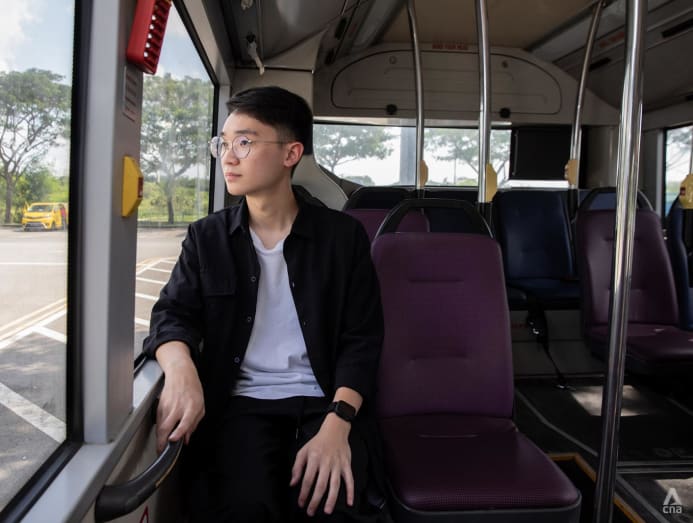
Driver Yeo Jun Hao, 23, who works with SBS Transit, said that a few elderly passengers who are regulars would deliberately wait for him at Toa Payoh Bus Interchange before boarding the bus that he drives, even though they could have taken any other bus operating in the same service route.
They would offer him fruits, biscuits and red packets (monetary gift tokens) during festive holidays such as Chinese New Year. And whenever he spots one particular elder, he deliberately parks the bus closer to the kerb of the bus stop so that she can get on more easily.
"So she's very happy to board my bus and always chooses to wait for me," Mr Yeo said.
Another young worker is Mr Muhammad Naz Farihin, an operational support officer at A&S Transit. The 27-year-old started out in late 2021 as a freelance driver with the private firm before being promoted in 2023.
“The job does get tiring from time to time, but no day is the same," he said. "There will be something new every single day, whether it’s the driving situation on the road or the passengers who board your bus. You wouldn’t really know what to expect and to me, that’s quite exciting."
He has also been a bus enthusiast for more than a decade, collecting bus-related memorabilia and studying different bus models. “When you put passion to work, especially when it’s something you love, being paid is just a bonus.”
To change the younger generation’s perception of bus driving being a blue-collar job, Mr Naz believes there needs to be more outreach to show them that even being a part-time driver is a rather lucrative profession.
He said that part-timers may earn almost up to S$2,000 monthly. Once people realise that they can earn a decent amount even on a part-time schedule, it might surprise them and convince them that this is a job worth trying out, he added.
This was what part-time driver Dionte Lee, 23, experienced. At A&S Transit, Mr Lee said that he gets paid an hourly rate and it is S$5 more an hour than what he received at his previous job in customer service on Sentosa Island. This motivates him to continue in this part-time job.
He is a polytechnic student who is pursuing a full-time internship while driving a private bus on weekends.
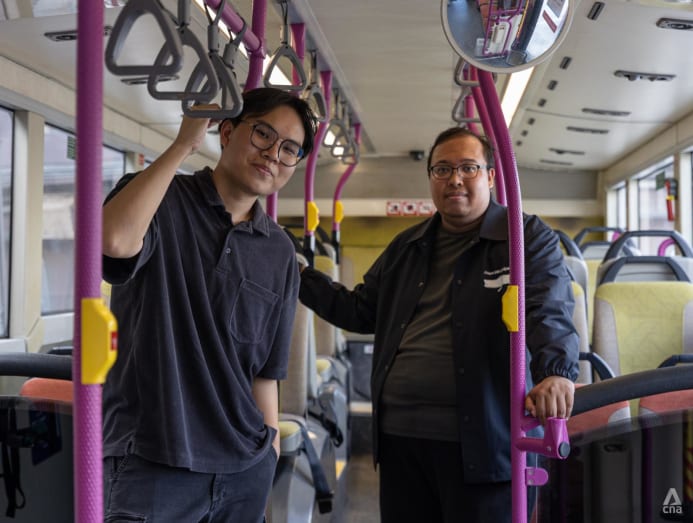
Mr Ahmad Shakir, 29, who works for private bus operator Luxury Coach and drives an overland coach, said that his pay is “comfortably above a fresh graduate's salary”. He began in 2018 as a part-time driver with a different firm earning between S$2,000 and S$3,000 a month.
Mr Tay the young interchange supervisor from Tower Transit said: “Bus captains should be respected for the essential work that they do. Many of the best cities in the world also have the best bus networks and bus captains play a vital role in keeping our city moving."
In the meantime, the vexing work of making bus driving appealing to Singaporeans continues.
At Tian Lang Xing Singapore, a private bus company, several hurdles have to be crossed before a driver is convinced to take up the job.
One lesser-known challenge is travelling to inconvenient locations to collect the bus at heavy-vehicle car parks in the dark of night before dawn, before the driver even starts the work shift.
Mr Eugene Khoo, its chief executive officer, said that the firm is unable to offer parking lots near to the drivers' homes sometimes, causing them to have to wake up as early as 4.30am to cycle or walk long distances to the assigned parking lot.
“There is no public transport for them at that time in the morning. So even if some of them had agreed to our salary package, they still would not want to work for us in the end due to these logistic constraints.”
Mr Khoo added that the turnover rate in his company for Singapore drivers is rather high at 20 to 40 per cent. For foreign drivers, the turnover rate is lower at 10 per cent.
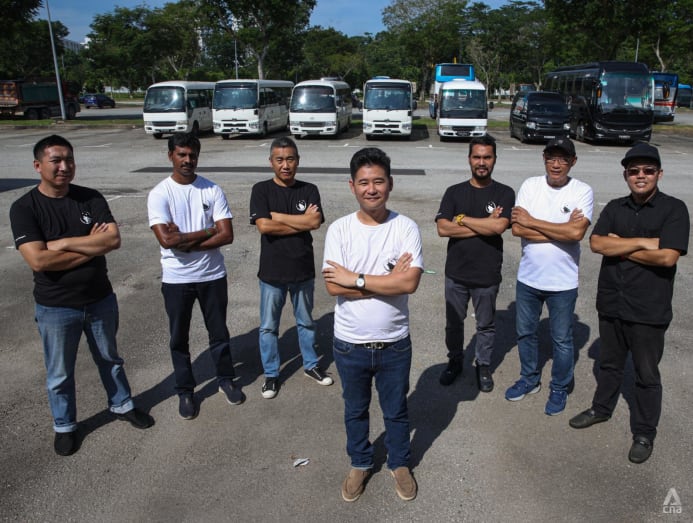
Apart from their main task at hand, drivers may have to be mindful of other duties. Mr Leo from DKJ Transport Service said that handling children in school buses tends to stress out drivers.
The children tend to get rather active and noisy, especially in the afternoon, and drivers have to ask the children to strap on their seatbelts before the bus starts moving.
“We definitely also receive quite a few complaints throughout the year (from parents), which the drivers have to deal with,” he added.
These complaints include pick-up timings being too early, pick-up points being too far away from the children's houses, or drop-off timings being too late.
The toll that shift work takes on the body is one that cannot be avoided.
Mr Lee the student who is a part-time driver with A&S Transit said that it is tiring for him to split his sleeping schedule while juggling an internship with shift work.
“Being a bus captain also kind of takes away your social life because you’re just really busy all day,” he added.
After graduating from polytechnic, Mr Lee does not intend to become a full-time bus driver because he prefers a managerial role. He aspires to become a station manager for an overseas airline.
WHAT INDUSTRY PLAYERS CAN DO FOR THE BUS SECTOR
Transport analysts said that better worker conditions still need to be established to woo jobseekers.
Dr Samuel Chng said that the nature of the job requiring long hours of work and interaction with passengers means that the job might remain unattractive to many people and deter them from joining the industry.
He heads the Urban Psychology Lab in the Lee Kuan Yew Centre for Innovative Cities at the Singapore University of Technology and Design.
To attract potential drivers, flexible work models could be introduced to offer schedules that might appeal to a broader workforce, including retirees or part-timers, Dr Chng suggested.
It is definitely important to ensure that drivers are fairly remunerated for the essential service they provide and have opportunities to continually upskill and reskill to progress in the industry, making the role more appealing, he added.
Mr Saktiandi Supaat, chairperson of the People’s Action Party Transport Government Parliamentary Committee, agreed that bus operators who are flexible can attract different types of potential applicants such as parents with children.
“Recent efforts to raise wages and look into improving shift work for bus captains by the bus operators are good. So, hopefully, more of our Singaporeans will see a career as a bus captain as attractive,” he said.
Dr Terence Fan from Singapore Management University who does transportation research proposed that to attract and retain talent, bus operators may want to look at engaging substitute drivers to take over some employees’ duties and provide more paid holidays to the full-timers in order to appeal to “the overall lifestyle of these positions”.
However, Dr Ong from NUS believes that a different approach is needed because the lack of manpower cannot be solved immediately.
“Is there any way to do more with less? Bus operators can consider consolidating operations, relying on less manpower yet serving more commuters, especially in areas that are close or nearby to each other.
“So this means that we may even need to rethink or reconfigure business practices.”
Multiple small businesses can merge to become a group, absorb a larger player in the market or consolidate, which might be more cost-efficient, Dr Ong added.
He said that bigger operators have a much higher chance of surviving overall, compared to smaller businesses.
“We really need to sit down and think about the profitability of bus service operators to help relieve the shortfall of drivers.”
Dr Ong also said that service providers should not completely rely on drivers and have to think hard about how to begin autonomous bus operations or have driverless buses.
“We do not really have a choice, so we have to use whatever means that will help in ensuring the efficiency of the service. The reality is that if we don’t do it now, then when the crash comes, we will be too late.”
Mr Lee the director of business development at Westpoint Transit said that setting up a structured approach to train bus drivers can help to broaden the mindsets of the new generation towards what a bus driver does.
“For example, it could be a course, some sort of educational path that is not university-degree standard, but the foundation is there such that the knowledge and skill set required can be of certain quality,” he said.
“Basically, to teach drivers in a more structured way than it is currently.” There are no such courses at present.
Mr Lee added that enhancing the skill sets of drivers and those of the next generation will increase social awareness of what it means to be a bus driver, thereby allowing the occupation to command greater respect.
Mr Ahmad the coach driver from Luxury Coach said that one of the walls to break down for bus driving is the “publicity and branding”.
Bus drivers tend to be an invisible part of people’s lives and he believes that leveraging social media to “engage the doom-scrolling generation and give a peek into the transport industry could help plant the seed into the consciousness of the youth”.
Mr Naz from A&S Transit said: “Drivers are sacred. Ask any bus industry right now – are they looking for drivers? I don’t think you can find one that says 'no'.”
Mr Ahmad is holding out hope that people will see bus driving as a noble career choice, where it is providing an important and necessary service to society.
He said that he had wanted to drive buses since he was a boy, but when he told his primary school teacher that he wanted to become a bus driver, she disapproved and asked him to aim higher or pick another ambition.
“Change needs to start early on, while minds are impressionable and malleable. If children see their role models dismiss or belittle something, or act a certain way towards something, they will copy and eventually internalise that behaviour,” he added.


.jpg?itok=geFldM_j)
.jpg?itok=LxERYqUN)














